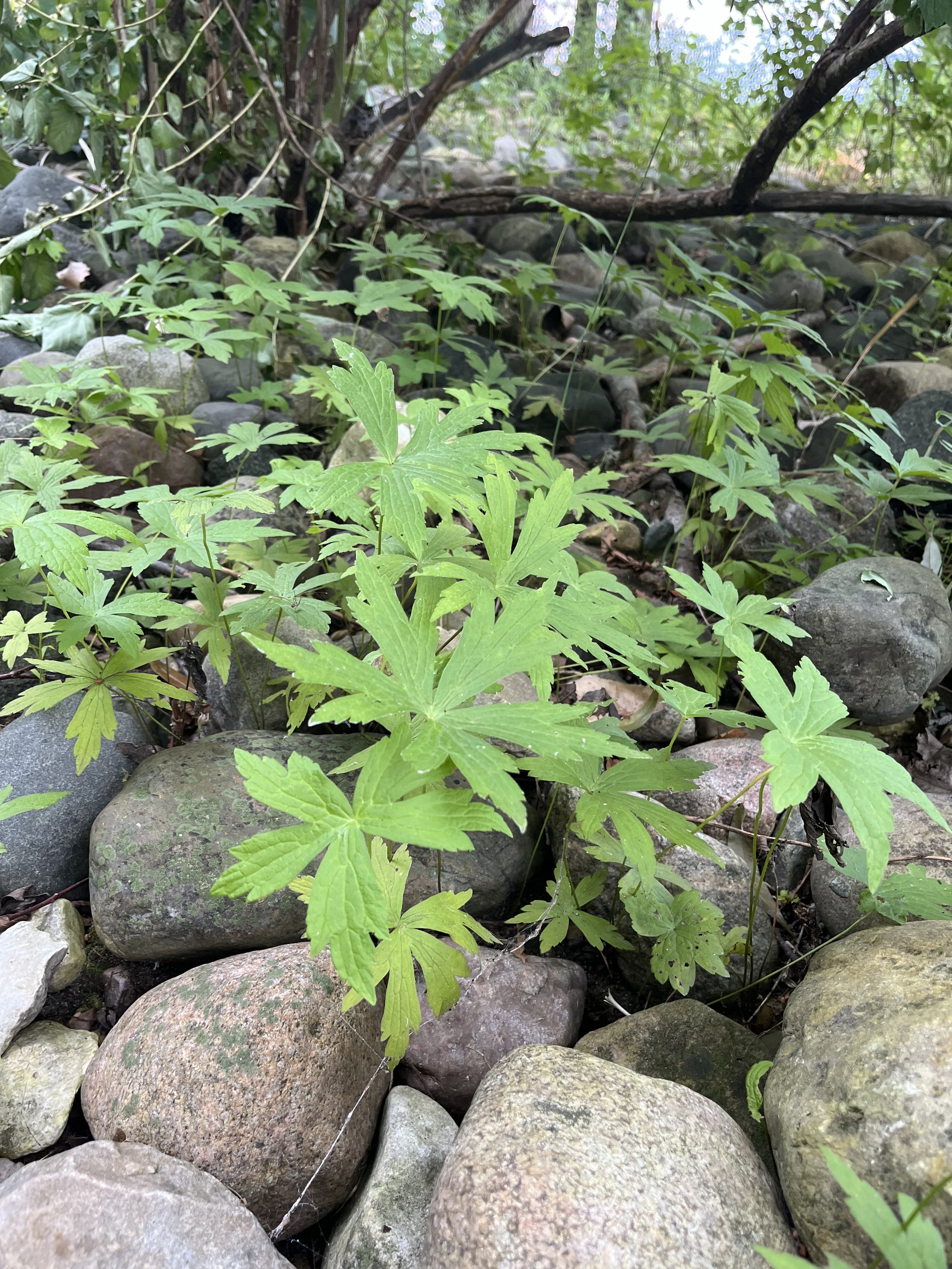 Image 1 of 2
Image 1 of 2

 Image 2 of 2
Image 2 of 2



Wild Geranium
Wild Geranium (Geranium maculatum) is an herbaceous perennial native to eastern North America's deciduous woodlands, ranging from southern Ontario to Georgia, eastern Oklahoma, and the Dakotas in zones 3 to 8. It is prevalent in most of Wisconsin, excluding a few northern counties. It features larger flowers than other native geraniums and is called by various names, including alum root and cranesbill. This clump-forming plant, abundant in natural woodland openings, consists of long-lived clones from individual plants. It is not an effective colonizer and seldom found in disturbed areas. Native Americans used G. maculatum medicinally for diarrhea and wounds. The plant has a loose cluster of basal leaves with flowering stems from thick, branched rhizomes, forming a mound of dark green foliage 12-28 inches tall, spreading 12-18 inches.
Wild Geranium (Geranium maculatum) is an herbaceous perennial native to eastern North America's deciduous woodlands, ranging from southern Ontario to Georgia, eastern Oklahoma, and the Dakotas in zones 3 to 8. It is prevalent in most of Wisconsin, excluding a few northern counties. It features larger flowers than other native geraniums and is called by various names, including alum root and cranesbill. This clump-forming plant, abundant in natural woodland openings, consists of long-lived clones from individual plants. It is not an effective colonizer and seldom found in disturbed areas. Native Americans used G. maculatum medicinally for diarrhea and wounds. The plant has a loose cluster of basal leaves with flowering stems from thick, branched rhizomes, forming a mound of dark green foliage 12-28 inches tall, spreading 12-18 inches.
Wild Geranium (Geranium maculatum) is an herbaceous perennial native to eastern North America's deciduous woodlands, ranging from southern Ontario to Georgia, eastern Oklahoma, and the Dakotas in zones 3 to 8. It is prevalent in most of Wisconsin, excluding a few northern counties. It features larger flowers than other native geraniums and is called by various names, including alum root and cranesbill. This clump-forming plant, abundant in natural woodland openings, consists of long-lived clones from individual plants. It is not an effective colonizer and seldom found in disturbed areas. Native Americans used G. maculatum medicinally for diarrhea and wounds. The plant has a loose cluster of basal leaves with flowering stems from thick, branched rhizomes, forming a mound of dark green foliage 12-28 inches tall, spreading 12-18 inches.
